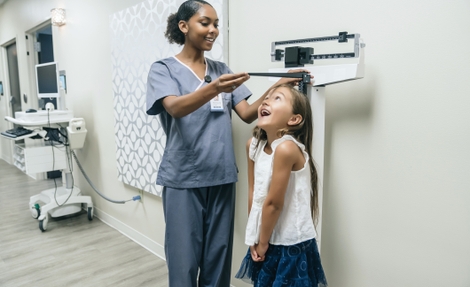Report on Contraceptive Use Among Adolescent Girls and Young Women in Southern Africa: An Analysis in the Context of Sustainable Development Goals
1.0 Introduction and Alignment with Sustainable Development Goals (SDGs)
This report analyzes contraceptive use among Adolescent Girls and Young Women (AGYW) aged 15-24 in seven Southern African nations: Botswana, Eswatini, Lesotho, Malawi, Mozambique, Zambia, and Zimbabwe. The findings are based on cross-sectional data from Population-based HIV Impact Assessment surveys conducted between 2019 and 2022. The analysis directly informs progress toward several key Sustainable Development Goals (SDGs), providing critical insights for policy and program development.
- SDG 3: Good Health and Well-being: The study’s focus on contraceptive access and use is central to Target 3.7, which aims to ensure universal access to sexual and reproductive healthcare services. Furthermore, by examining the intersection of contraceptive use and HIV status, the report addresses Target 3.3, concerning the end of the AIDS epidemic.
- SDG 5: Gender Equality: Access to family planning is a cornerstone of gender equality and the empowerment of women and girls. This research provides data relevant to Target 5.6, which calls for universal access to sexual and reproductive health and reproductive rights.
- SDG 4 & SDG 10: Quality Education & Reduced Inequalities: The report identifies significant associations between contraceptive use and socio-economic factors such as education level and wealth, highlighting the interconnectedness of health outcomes with SDG 4 (Quality Education) and SDG 10 (Reduced Inequalities).
2.0 Key Findings on Contraceptive Prevalence and Methods
2.1 National Prevalence Rates
Contraceptive use among the 11,094 AGYW surveyed varied significantly across the region, indicating disparate progress toward SDG 3.7.
- Highest Prevalence: Botswana (75.1%)
- Lowest Prevalence: Mozambique (45.0%)
2.2 Dominance of Short-Acting Methods
The data reveal a heavy reliance on user-dependent, short-acting methods, particularly condoms. This presents a challenge for consistent and effective prevention of unintended pregnancies and STIs.
- Condom Use: Condoms were the most frequently reported modern method in four of the seven countries.
- Eswatini: 66% of modern method users
- Botswana: 61% of modern method users
- Lesotho: 49% of modern method users
- Mozambique: 33% of modern method users
- Dual Method Use: The practice of using a condom in conjunction with another modern contraceptive method was notably low, limiting comprehensive protection.
- Highest Rate: Botswana (15%)
- Lowest Rate: Malawi (1%)
3.0 Determinants of Modern Contraceptive Use
3.1 Factors Associated with Increased Use
A pooled multivariable logistic regression analysis identified key socio-demographic factors positively correlated with the use of modern contraceptives. These findings underscore the importance of addressing social determinants of health to achieve SDG targets.
- Education: Higher education was associated with a 1.7 times higher odds of use (95% CI 1.5 – 2.0), linking progress in SDG 4 to positive outcomes in SDG 3.
- Wealth: AGYW in the highest wealth quintile had 1.5 times higher odds of use (95% CI 1.2-2.0), highlighting economic inequalities (SDG 10) in healthcare access.
- Parity: Having children was a strong predictor, with odds of use increasing with the number of births (One birth: OR 2.0; Two or more births: OR 2.5).
3.2 Factors Associated with Decreased Use
A significant barrier to contraceptive use was identified among AGYW living with HIV, indicating a critical gap in integrated healthcare services.
- HIV Status: AGYW living with HIV had lower odds of modern contraceptive use (OR 0.7, 95% CI 0.6 – 0.9), posing a challenge to achieving both Target 3.3 and 3.7.
4.0 Conclusions and Recommendations for SDG Advancement
4.1 Summary of Challenges
Contraceptive prevalence among AGYW in Southern Africa is inconsistent across countries. The predominant use of short-acting methods like condoms, coupled with very low dual-method use, suggests that many AGYW are not adequately protected against both unintended pregnancy and STIs/HIV. Disparities linked to education, wealth, and HIV status demonstrate that vulnerable populations are being left behind, hindering progress toward SDGs 3, 5, and 10.
4.2 Strategic Recommendations
To accelerate progress towards the Sustainable Development Goals, particularly SDG 3 and SDG 5, the following actions are recommended:
- Promote Comprehensive Protection: Health programs must actively promote the dual use of condoms with other effective contraceptive methods or integrate Pre-Exposure Prophylaxis (PrEP) into family planning services to meet the comprehensive reproductive health needs of AGYW.
- Address Socio-Economic Barriers: Interventions must target the underlying inequalities identified in the report. This includes strengthening comprehensive sexuality education in schools (SDG 4) and designing programs that ensure equitable access for AGYW from lower wealth quintiles (SDG 10).
- Integrate HIV and Reproductive Health Services: The lower contraceptive use among AGYW living with HIV points to a critical need for better integration of HIV care and family planning services to ensure this population’s health and rights are fully addressed.
Analysis of Sustainable Development Goals in the Article
1. Which SDGs are addressed or connected to the issues highlighted in the article?
-
SDG 3: Good Health and Well-being
The article’s primary focus is on contraceptive use, reproductive health, and HIV among Adolescent Girls and Young Women (AGYW) in sub-Saharan Africa. These topics are central to ensuring healthy lives and promoting well-being for all at all ages.
-
SDG 5: Gender Equality
The research specifically targets AGYW (ages 15-24), a key demographic for gender equality initiatives. Access to contraception is a critical component of empowering women and girls, enabling them to make informed decisions about their bodies, health, and future, which is a core objective of SDG 5.
-
SDG 4: Quality Education
The article establishes a direct link between education and health outcomes, stating that “higher odds of modern contraceptive use was associated with higher education.” This highlights the role of education in empowering AGYW to make healthier choices, connecting the research to the goals of inclusive and equitable education.
-
SDG 10: Reduced Inequalities
The study finds that socioeconomic status is a significant factor in contraceptive use, noting that being in the “highest wealth quintile” is associated with higher odds of use. This points to inequalities in access to healthcare services based on economic status, an issue that SDG 10 aims to address.
2. What specific targets under those SDGs can be identified based on the article’s content?
-
Target 3.7: Universal access to sexual and reproductive health-care services
This target aims to ensure universal access to family planning, information, and education by 2030. The article directly addresses this by analyzing contraceptive use rates, the types of methods used (implants, injectables, pills, condoms), and the prevalence of dual-method use among AGYW in seven Southern African countries.
-
Target 3.3: End the epidemics of AIDS and other communicable diseases
The article connects contraceptive use to HIV prevention. It discusses condom use, which protects against both pregnancy and sexually transmitted infections like HIV, and mentions that contraceptive use was lower among AGYW living with HIV. The conclusion suggests promoting dual use of methods or PrEP, which are key strategies in the fight against HIV/AIDS.
-
Target 5.6: Ensure universal access to sexual and reproductive health and reproductive rights
This target focuses on ensuring women and girls have control over their reproductive health. The article’s investigation into contraceptive prevalence and the factors influencing its use among AGYW is a direct examination of the progress and challenges related to achieving this target for a vulnerable population.
-
Target 10.2: Promote universal social, economic, and political inclusion
The article’s finding that AGYW in the highest wealth quintile have higher odds of using modern contraception demonstrates an economic inequality in access to health services. This directly relates to the goal of empowering and promoting the inclusion of all, irrespective of economic status.
3. Are there any indicators mentioned or implied in the article that can be used to measure progress towards the identified targets?
-
Indicator for Target 3.7 & 5.6: Proportion of women with their need for family planning satisfied with modern methods (related to official indicator 3.7.1/5.6.1)
The article provides direct data for this indicator. It states that “contraceptive use (male or female sterilization, IUD, implants, injectables, pills, condoms) ranged from 45.0% in Mozambique to 75.1% in Botswana” among AGYW. This quantifies the extent to which family planning needs are being met with modern methods in the studied populations.
-
Indicator for Target 3.3: Condom use rate and prevalence of dual-method use
While not a formal UN indicator, these are crucial for measuring HIV prevention efforts. The article provides specific data, such as “Condoms were the most frequently reported method in four of seven countries” and “Dual method…ranged from 1% in Malawi to 15% in Botswana.” These metrics serve as practical indicators of progress in combating the spread of HIV.
-
Implied Indicator for Target 10.2 & 4.5: Contraceptive prevalence rate, disaggregated by wealth quintile and level of education
The article does not state this as a formal indicator, but its analysis implies its importance. By reporting that higher education (OR 1.7) and being in the highest wealth quintile (OR 1.5) are associated with higher contraceptive use, the study demonstrates that tracking contraceptive prevalence across different socioeconomic and educational groups is essential for measuring and addressing inequalities in healthcare access.
4. Table of SDGs, Targets, and Indicators
| SDGs | Targets | Indicators |
|---|---|---|
| SDG 3: Good Health and Well-being | Target 3.7: By 2030, ensure universal access to sexual and reproductive health-care services, including for family planning, information and education. | – Prevalence of modern contraceptive use among AGYW (ranging from 45.0% to 75.1% by country). – Types of methods used (implants, injectables, pills, condoms). |
| SDG 3: Good Health and Well-being | Target 3.3: By 2030, end the epidemics of AIDS and other communicable diseases. | – Percentage of modern contraceptive users who use condoms (e.g., 61% in Botswana, 66% in Eswatini). – Rate of dual-method use (ranging from 1% to 15%). – Contraceptive use prevalence among AGYW living with HIV. |
| SDG 5: Gender Equality | Target 5.6: Ensure universal access to sexual and reproductive health and reproductive rights. | – Overall contraceptive use rates among Adolescent Girls and Young Women (AGYW) as a measure of access to reproductive health services. |
| SDG 4: Quality Education & SDG 10: Reduced Inequalities | Target 10.2: By 2030, empower and promote the social, economic and political inclusion of all, irrespective of… economic or other status. | – (Implied) Contraceptive prevalence rate disaggregated by level of education and wealth quintile. – Odds Ratio of contraceptive use associated with higher education (OR 1.7) and highest wealth quintile (OR 1.5). |
Source: frontiersin.org







